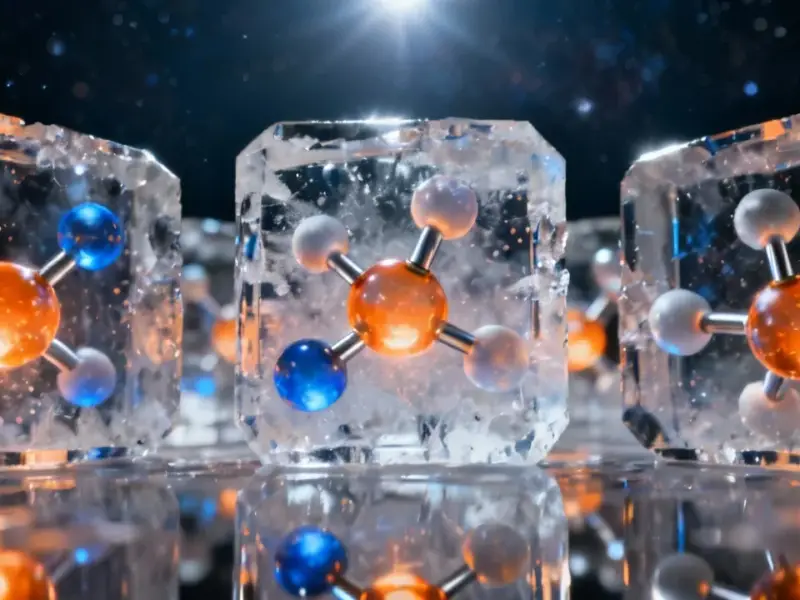According to MIT Technology Review, startup Still Bright has developed a water-based purification process for copper that could significantly reduce pollution compared to traditional smelting. The technology, inspired by vanadium flow battery chemistry, uses chemical reactions to extract copper from concentrates in 30-90 minutes, producing material that’s roughly 70% pure before further refinement. CEO Randy Allen states the company is focused on addressing the “copper supply crisis” as global demand is expected to grow by 40% between now and 2040. The timing is critical given that the U.S. currently has only two operational ore smelters, forcing most American mines to ship concentrates to China for processing despite environmental concerns. This innovation arrives as the copper industry faces both supply chain and sustainability challenges that could impact the clean energy transition.
The Coming Copper Crunch
The copper supply situation is more precarious than many realize. While global trade data shows increasing pressure on critical minerals, copper faces a perfect storm: declining ore grades at existing mines, decade-long lead times for new projects, and geopolitical concentration of processing capacity. What makes this particularly concerning is that copper isn’t just another commodity – it’s the circulatory system of the energy transition. Electric vehicles use approximately four times more copper than conventional vehicles, while solar and wind installations are copper-intensive compared to fossil fuel alternatives. The projected 40% demand growth by 2040 might actually be conservative if electrification accelerates faster than expected.
The Geographic Vulnerability Nobody’s Talking About
The concentration of smelting capacity in China represents a strategic vulnerability that extends beyond environmental concerns. When a single region controls processing for a globally distributed resource, you create choke points that can disrupt entire supply chains. This isn’t theoretical – we’ve seen similar vulnerabilities with rare earth elements and semiconductor manufacturing. The fact that the U.S., with substantial copper reserves, must ship concentrates overseas for processing means American clean energy ambitions are tethered to foreign processing capacity. Still Bright’s technology could enable more distributed, localized processing that reduces these geopolitical risks while potentially creating domestic jobs in mining regions.
The Scaling Challenge Ahead
While the chemistry appears promising, the real test for Still Bright will be scaling from laboratory success to industrial implementation. Mining operations measure throughput in thousands of tons per day, not grams per hour. The transition from 30-90 minute batch processing to continuous industrial-scale operation represents a significant engineering challenge. Additionally, the integration with existing solvent extraction and electrowinning processes means they’re not replacing the entire conventional pathway – they’re inserting themselves into the middle of it. This creates both opportunities and complications, as mining companies are notoriously conservative about adopting new technologies that could disrupt their carefully optimized operations.
Beyond Copper: A New Paradigm for Metals Processing
The most exciting aspect of this technology might not be its immediate application to copper, but its potential to revolutionize how we think about metals extraction more broadly. If battery chemistry principles can be successfully applied to copper purification, similar approaches could potentially work for other metals facing environmental challenges in processing. The mining industry has been remarkably resistant to fundamental technological change for decades, largely optimizing existing processes rather than reinventing them. This represents a potential paradigm shift toward electro-chemical approaches that could reduce energy consumption, lower emissions, and enable more flexible, distributed processing facilities closer to mining operations.
What Success Would Mean for Clean Energy
If Still Bright or similar technologies succeed at commercial scale, the implications extend far beyond the mining industry. More efficient, less environmentally damaging copper production could lower costs and reduce opposition to new mining projects, which often face local resistance due to environmental concerns. This could accelerate the availability of copper precisely when clean energy technologies need it most. We’re likely to see increased investment in alternative extraction technologies over the next 12-24 months as both miners and clean energy companies recognize the supply chain risks. The companies that succeed won’t just be selling technology – they’ll be enabling the entire energy transition by solving one of its most critical material constraints.




